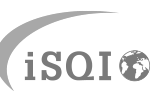Getting more completed in less time is a dream of every project manager. Scrum and Agile can help to accomplish this dream. What’s more, they are well known for boosting bottom lines, improving processes, and delighting customers. Some businesses are reluctant to implement Scrum and Agile into their workflows because of the learning curve required. However, with the benefits available, it is well worth it.
We’re sharing the top benefits and reasons why Scrum is worth investing time and effort into, and why it makes sense for project managers to go Agile. To fully understand the benefits of Scrum and Agile, it is essential that you have a good level of knowledge on what these terms mean. Our
free Webinar provides an overview of Agile concepts and the role of the product owner.
If you are wondering why you should consider Scrum for your product development, then read on to explore the many benefits involved;
Improved Quality
No matter what project you are working on, it is likely that it exists to accomplish a goal or vision of some kind. Scrum offers the framework for continuous feedback during the development stages, to ensure that the end product is of the highest quality.
Daily testing and feedback from product owners within the development process allows the team to address issues as soon as they arise. This regular and continuous improvement is supported by sprint reviews with stakeholders and allows team-specific factors, including processes, tools and relationships to be enhanced.
Decreased Time To Market
Scrum and Agile offer faster delivery times than traditional development methods. Because there is a dedicated product owner within the Scrum team, development can be initiated earlier than with the waterfall method. Waterfall methods feature an upfront documentation phase which often takes months, but this is not necessary when using Agile.
Scrum and Agile also separate high priority requirements from those of less importance; this means that there is no need to wait for the whole project to be complete before being released. At the end of every sprint, a functional and working product is produced.
Increased Customer Satisfaction
When you have a Scrum team, you have a team that is completely committed to creating a product or service that satisfies customers. When using Agile, customers are collaborated with as partners and are kept engaged and involved throughout the entire process. Because Agile works with a dedicated product owner, there is one person who is an expert on understanding the customer needs and product requirements.
Customers and stakeholders can see working functionality on every sprint review, and ultimately the product is delivered faster and across multiple releases.
Better Return On Investment
Not only does having a decreased time to market help to improve customer satisfaction and team morale, but it also helps realise an increased return on investment. This is because targeted benefits, such as revenue, can start to be delivered sooner and result in a higher total return over time.
Furthermore, the regular feedback from sprint reviews means that corrections are made early on, saving on costs and time to fix these issues later in the process. As there are fewer costly defects because of upfront testing and automation, there is less work wasted and projects are deployed faster.
Improved Team Morale
When using Agile, you are promoting self-management within the team. Decisions that are usually made by management are put into the hands of the Scrum team, which can help to boost morale and encourage everyone to take control. By being a part of a team that self manages and organises, team members have the freedom to be creative, innovative and get acknowledgement for their own expertise.
Agile is flexible enough to allow teams to organise staff members around their specific strengths and work styles. Team morale is improved by decisions being made and tailored to give every team member a balance between their professional and personal lives.
Collaboration And Ownership
Scrum and Agile offer great results because it allows Scrum teams to take responsibility for their own projects. By being able to take ownership of quality and the project’s performance from start to finish, teams are able to work better together. In an Agile situation, the product owner, development team and Scrum master will all work closely every day.
Sprint planning meetings are used to help the development team organise their focus depending on the business priorities. Decisions are often made by consensus, helping every member of the team have their own opinion voiced and input made.
Reduced Risk
When Agile is used, projects are better controlled as they are time-boxed, and everyone is aware and responsible for their own part. When it is used properly, Scrum will allow everyone involved to know what is being done and when.
Because teams communicate and collaborate every day, there are fewer crises and unknowns appearing during the project. This means there is a reduced risk to the project because teams are always aware of every stage of the process, and errors can be addressed immediately.
Increased Popularity
As Agile and Scrum have been growing with popularity over many years, more and more people are beginning to understand the benefits. This means that finding staff who are fully trained and experienced in Agile is easier than ever before.
There are also plenty of training options for teaching Scrum to team members, as the process grows in popularity. An increasing number of product owners, development team members and managers are seeking advanced training in Scrum and Agile to enhance their skills.
Here at TSG Training, we offer a whole host of Agile and Scrum courses, including
BCS EXIN Practitioner Certificate In Agile Scrum Product Owner. This is a three-day course which teaches candidates to lead Agile Scrum projects successfully and is ideal for those in the Product Owner role.
Our
BCS EXIN Practitioner Certificate In Agile Scrum offers similar training on a broader level for any member of the Scrum team, helping every member of the team to be on the same page while improving skills with an accredited qualification too.
Meanwhile, for Scrum beginners, we recommend
BCS EXIN Foundation Certificate in Agile Scrum course. This engaging three-day course provides an overview of Agile and Scrum frameworks, Scrum practices and advanced Scrum concepts.









